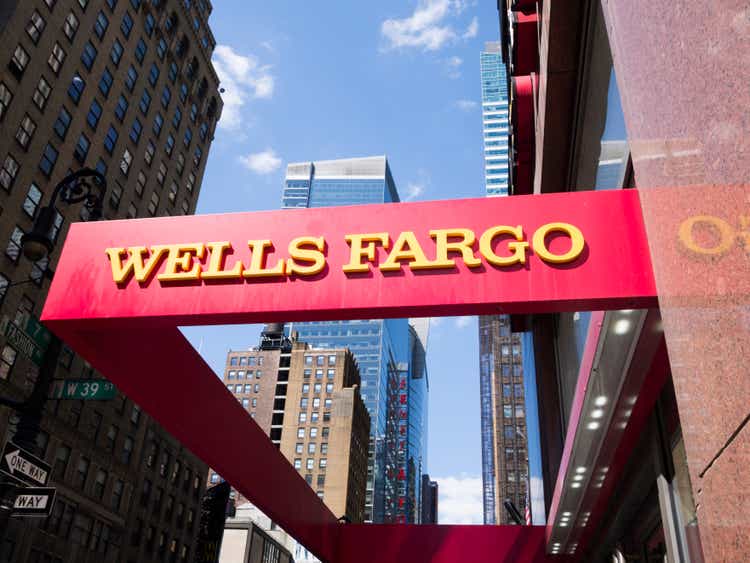
wdstock/iStock Editorial via Getty Images
Wells Fargo (NYSE:WFC) stock may be gearing up for a strong rally as the bank approaches a pivotal moment, with the potential lift of a longstanding asset cap that has constrained its growth for years, Barron’s said in a report dated Tuesday.
Investors cheered the company’s move on Sept. 26 to submit a review of its risk and control overhauls to the Federal Reserve in an effort to remove the asset cap, Bloomberg had reported. The asset cap was placed on Wells Fargo (WFC) in February 2018 as punishment for the company staff opening bogus accounts so they could meet sales quotas.
Wells Fargo (WFC) shares have retreated some 12% since the cap was put in place, while rivals like Bank of America (BAC) have gained ~25% and JPMorgan Chase (JPM) has climbed ~85%.
The San Francisco, California-based bank’s executives still expect the asset limit of $1.95T to remain in place at least into 2025 as the Federal Reserve reviews and analyzes the submission.
(WFC) stock, meanwhile, has actually fared better than the broader stock market from a year ago, gaining ~43% vs. S&P 500’s ~34% increase. But Barron’s thinks there may be more upside, “given an earnings boost that could come with an end to the cap and the bank’s cheap valuation: 11 times this year’s expected earnings of $5.11 a share, 1.4 times tangible book value, and a 2.9% yield.”
Should the asset cap end, some of the high expenses toward complying with the regulatory consent order would, too, draw to a close, potentially paving the way for greater profitability down the road.
“While all of these costs won’t go away if the cap is lifted, they amount to more than 50 cents a share of after-tax earnings and about 5% of the bank’s total noninterest expense base,” the report said.
Seeking Alpha’s Quant system gives (WFC) a valuation grade of “C+,” with some of the poorest marks in dividend yield and price-to-book. The company scored a “C” in revisions and a “D+” in momentum, though it received bullish marks in growth and profitability, according to SA’s Factor Grades.
